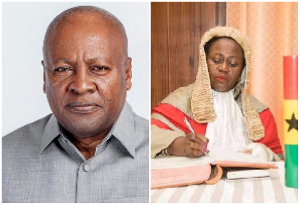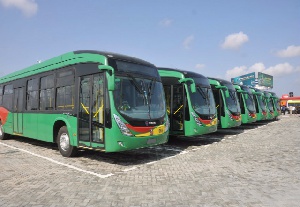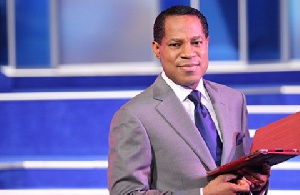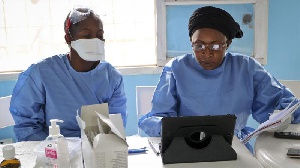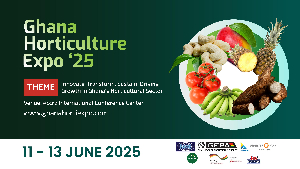On 24th February 1966, after my mother helped me cross to the other side of our end of Accra High Street, I set out to walk to school by myself, as usual. She was a young mum of three children and expecting her fourth.
My father was a newsreader at Broadcasting House (GBC) and often drove off at dawn to read the 6 and 7am news. Therefore she had to do the school run by herself, without a car or any home-help.
I was in Primary One at Bishop’s Girls’ School (BGS) further down the High Street. My sister Ansaba was at Queen Elizabeth’s Nursery School behind Parliament House. And my second sister Araba was a little over a year old. We lived in a block of flats just off the High Street, called Government Rest House, formerly accommodation for expatriate staff. It was a massive building, set in spacious grounds with ‘boys’ quarters’ for their domestic staff, right behind Victoriaborg Press.
The latter was demolished and is now the site of the new Court Complex opposite CEPS HQ. The school run for my sister and I, was broadly in the same area, but mum decided that with the pressures on her time and energy, at nearly six, I was old enough to walk to school by myself, so she could just concentrate on getting Ansaba to Nursery.
After a few trials, I was soon making my way to school, without any fuss. Indeed, I enjoyed the solitary walk enormously. Although it was a busy road, it was very safe to walk along; there was a wide pavement, bordered by well-kept lawns next to the practice grounds of Olympics Football Club. Because I could read before I started school, I avidly absorbed any writing on my way to BGS. From statements on trotros, to little white signs with black lettering on the lawns, ordering people to ‘keep off the grass’, to reading and memorising the names and flags of each of the African Heads of State who attended the OAU conference in October 1965.
I always paused to stare at Dr. Nkrumah’s statue in front of Parliament House. He was very much a part of my life at home. My father mentioned his name several times a day in the news, which I heard on the communal radio that blared out from a high shelf close to our end of the hallway we shared with other tenants on our floor.
I had met Osagyefo and his family the year before, when he invited children in all government-run Day Nurseries in Accra, to his daughter Samia’s fifth birthday party at Flagstaff House. I had also seen him at the opening of the Ghana News Agency which was right outside our compound. My sister Ansaba, ever precocious, wandered over to sit on the dais, right in front of Osagyefo and his entourage. He asked the people who tried to shoo her away, to leave her be. I recall that incident so vividly, I even remember she was wearing a red dress with a white Peter Pan collar.
As young as I was, Osagyefo was very much a real presence in my life. Casting my eyes on his statue every morning on my way to school, overtly and subliminally reinforced my awareness of him in my life. He wasn’t just the man my parents and others spoke about, but I had met him twice and there he was, every morning lifting his hand in salute.
After breakfast on the morning of 24th February 1966, I slung my school bag across my chest, gripped the ‘canteen’ containing my lunch, took my mum’s hand and walked with her to our end of the High Street, where she helped me cross the road.
By the time I got to the Arts Centre, it suddenly struck me that the road was unusually quiet; none of the habitual cacophony of passing cars, buses or trotros. But I shrugged it off and plodded on. Just before I reached the flagpoles opposite Parliament House, which months earlier had sported the flags and pictures of African Leaders, some soldiers suddenly appeared to my left, from the dirt road leading to the beach, and pointed their guns at me. A policeman suddenly came out from behind them, and gasped, more in shock at them, and asked me, “Akwala kitwa, wo ko hen?” (Child, where are you going?). I replied that I was going to school.
He responded kindly that there was no school that day, and that I should go home. He asked if I knew my way home. I said yes, but would need help to cross the road. So he took my hand and walked back with me. Just before we got to the point where my mum usually crossed the road with me, there she was, with her hands on her head, wailing, surrounded by a few neighbours. She ran across the road, scooped me up, and thanked the policeman profusely.
When we got home she told me that there had been a ‘coup’. I had no idea what that meant. She said after seeing me off to school, she heard on the news that Osagyefo had been deposed, the army had taken over and some people had been killed. It didn’t make any sense to me. I literally had no concept of death. But I realised it was serious, because almost all our neighbours hang around the hallway all day, listening to the radio.
Later, when my father came home from work, my mother melodramatically narrated how she had inadvertently released me to go and die! Years later, whenever my father recounted the trauma of being ordered to leave the newsroom looking down the barrel of a gun, he would add that I could have died too! It was his misfortune to be on news-reading duty for every coup that took place in Ghana after that one!
I stayed at home for almost a week, before my parents deemed it safe for me to return to school. On that day, I noticed with a pang that there was a hole in front of Parliament House, where Osagyefo’s statue used to be. That hole explained for me the sad faces, sighs and sorrowful voices of the grownups huddled together under the radio set. Fifty years since that dastardly act, Ghana has been flailing about in a hole, incapable of digging herself out!
Opinions of Thursday, 25 February 2016
Columnist: Nana Ama Amamoo



